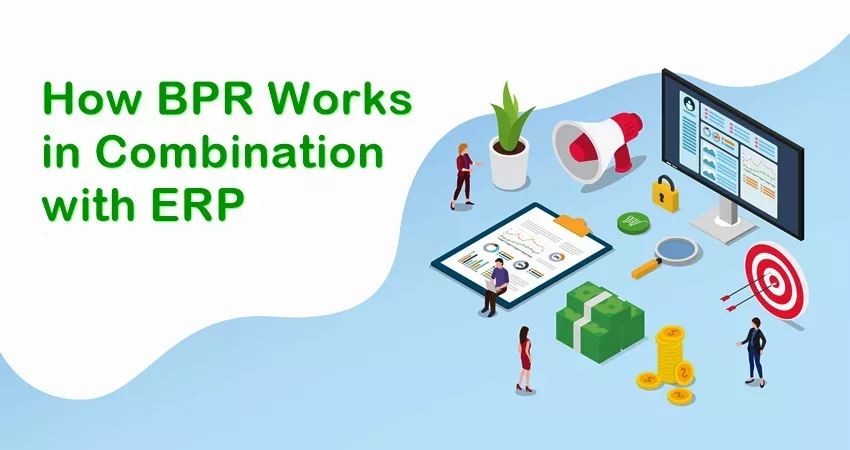Enterprises are always on the lookout for newer ways to boost efficiency and gains while reducing costs. An BPR in ERP (Enterprise Resource Planning) tool helps resolve this issue, but it has its own set of challenges.
Enterprises need to ensure their business operations follow the processes of the ERP solution.
In case of a mismatch, the organization will not be able to gain the kind of advantage they were hoping. They might end up in a financial loss owing to the capital investment in the ERP solution.
So, the solution to avoid this problem? BPR (Business Process Reengineering)! We will look into each aspect of this in detail ahead.
Enterprise Resource Planning (ERP) is the management of several business processes. It is a software that contains multiple applications within the tool.
These applications enable efficient business operations of the various departments in an enterprise.
ERP solutions help keep track of resources and expenses as well as a horde of other data. It then provides an analysis of how well the organization utilized the resources.
It also shows what results were achieved, and if those results are within the gambit of the organization.
Also Read: What is Next-Generation ERP?
Every organization functions based on some processes which help them achieve certain targets. If there is a lapse in this process, then the expected result is not achieved.
Moreover, the process in place might not always be 100% efficient. So, to increase their efficiency, there is a need to re-engineer them.
This is known as business process reengineering. It is an important exercise for every enterprise to perform in order to gain maximum value from the available resources.
As we discussed earlier, ERP requires effective business processes. In case they are not, then BPR is needed to ensure they are in-line with the requirements prescribed by the ERP tool. So, it is safe to assume that BPR and ERP go hand-in-hand.
But it is optional. Some organizations can opt for BPR before implementing ERP. Some can opt to go with the BPR processes, which are bundled with the ERP package.
Or some organizations can skip the BPR process altogether. BPR helps accelerate the process of gaining benefits from ERP substantially.
There are three phases in which BPR can be conducted in ERP. They are as follows:
BPR before ERP implementation
Most organizations prefer opting for this phase. It helps them gain a better view of the current processes and resources and how they are functioning.
This way, they can check on the challenges they are facing and which need to be addressed on a higher priority.
Organizations can benefit themselves and customers better through an improved value proposition and customer satisfaction.
This is also easier for employees as they are aware in advance of the changing processes. They can adapt to it well in time to avoid disruptions in daily operations.
ERP recommended BPR
Some organizations opt for an ERP solution that does not deviate extensively from their tried and tested processes. Hence, they make the bare minimum ERP recommended BPR.
This ensures they derive the right value from the implementation and do not create havoc in the regular functioning.
Yet, this has a flipside. If the right ERP is not chosen, this can backfire and result in heavy losses instead of substantial gains.
So, the mantra here is to opt for the right ERP package whose standard processes suit your organization.
BPR during ERP implementation
This is a risky and non-practical option, albeit a possible one. Here the business processes are changing in real-time and cause significant disruptions to the daily tasks of the company.
The customers still have to be served like the usual, despite the changing processes and implementation in operations.
Disruptions of any kind here can result in unhappy customers and cause damage to the organization.
Conclusion
BPR holds great importance in ERP. It is imperative for enterprises to take note of this when opting for an ERP implementation. The process can be a bit taxing in case the BPR is intense.
With all the hassles considered, it is still a beneficial process as the value derived off it is much higher than ever experienced.
You May Also Like to Read:
Business Process Re-engineering vs. Business Process Management

